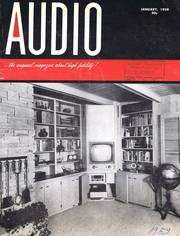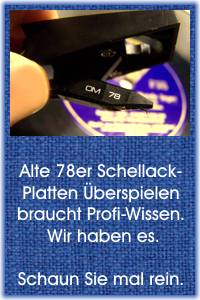Erläuterungen zu diesen US-AUDIO Seiten der 1950er Jahre
Die hier stehenden amerikanischen Artikel aus 1959 (aus der US-AUDIO) sind teilweise sehr gewöhnungsbedürftig, weil sie erstens aus einer längst vergangenen Zeit stammen und zweitens, weil dort in den USA ganz "anders" gedacht wurde als bei uns in Old Germany oder in Europa.
Vergleichbar mit unseren deutschen Hifi-Magazinen etwa ab 1962 ist jedoch, daß auch dieses Audio-Magazin ihre Anzeigen- Kunden und -Leser am Markt oder von anderen Magazinen (be- oder ab- ?) werben mußte. - Weiterhin sind die riesigen Dimensionen des amerikanischen Kontinents mit unseren hier in Europa nicht vergleichbar. - Ein Redaktions-"Trip" von New York nach Los Angeles oder Chicago oder gar in die Wüste nach Las-Vegas zu einer der CES- Audio- "Shows" war - auch mit dem Flugzeug - immer noch eine halbe Weltreise. Und jede Ausstellung oder "Messe" wurde als "Show" deklariert. Und natürlich, in USA musste alles "Show" sein, um beim Publikum einige Aufmerksamkeit zu erzeugen.
.
Die monatliche Kolumne - Editors' REVIEW - das Editorial
"TAPE TO THE FORE" - AGAIN (Das Band ist wieder vorne)
Several years ago, magnetic tape was the only satisfactory means by which we could have stereo reproduction in our homes, and tape people - both those who made equipment and those who made recordings - prospered.
Then came the stereo disc, and the tape industry went into a lean year. Fortunately this happened just about the same time that TV tape recording boomed so strongly, so at least some of the equipment manufacturers went merrily on. But the market for (pre-)recorded tapes dropped badly, as we all know.
Now it is a well known fact that tapes at 7 1/2 ips can be of better listening quality than LP records, but the investment required for playing them is certainly more than is needed for the less expensive discs.
The dual-track monophonic tape on a good tape machine offered better quality than the average disc, but the cost of the tape was greater. Four-track tape at 3 3/4 ips has it all over discs for cost, but this observer, at least, has not heard any that were considered comparable from a quality standpoint to the LP.
Das Magnetband übertrifft aktuell die LP
Four-track 7 1/2 tape of today is easily comparable to two-track 7 1/2 of two years ago, and better than single-track 7 1/2 of six or eight years ago. Maybe - and that's as far as we will go - maybe four-track 3 3/4 will get up there, but the disc manufacturers are not going to stand still - they too will make improvements.
As we see it, it is likely that the four-track 7 1/2 tape will end up as of slightly better quality than the disc - particularly for stereo - and the cost should be about the same, minute for minute.
As a matter of fact, that is about the way the economics of the subject will force it to be. If the reproducing equipment is of the highest grade, the tape will undoubtedly be much superior.
Braucht jeder einen Rolls Royce ?
But where does all this get us? Certainly a Rolls Royce gives a better ride, a more luxurious one, than any of the "lowest priced three," but does that mean that everyone is going to buy a Rolls?
Not for a minute - not all of us can afford the difference even though we realize the advantages. Many others just don't think the extra cost is worth it for the results to be gained.
We don't think for a minute that a $75 tape player is going to compare with a $950 one - which is about the same percentage difference as between the automobiles mentioned.
We believe that there will always be some who think that the extra expense is justified for the better quality just as there are those who prefer to be filled up on a six-dollar porterhouse instead of 85 cents worth of hamburger.
However, now that the tape industry has rolled with the punches, it has come up with a high-quality product - four-track 7 1/2 (pre-)recorded tapes - and a new division of Ampex Audio has been formed to distribute nationally the products of the many tape producers.
This division - "United Stereo Tapes" - will put tapes back on the dealers' shelves, and tape will again become the leading medium for top quality of reproduction.
Darum gibt es eine neuen Bereich - The Tape Guide
And just as a reminder of our interest in the best in sound reproduction, please note that we established a new section - The Tape Guide - beginning with the May issue this year 1959. This section has for its principal aim the improvement of tape usage in the home, and any serious tape user will find something of interest in the Guide.
And many will continue to offer their own experiences and suggestions for the help they may be to others - incidentally receiving some loot for their trouble, which same can be plowed back into more and better tape equipment in their own installations, or even in more recorded tapes.
We look forward to the tape industry's best year in the next twelve months.
.
JAZZ FROM KJAZ (ein Radiosender)
Don't try to pronounce that - even though some New Yorkers try a phonetic pronounciation of WQXR, resulting in something like "kewkser". KJAZ is a radio station in the San Francisco Bay area that finally got tired of the conventional "top 40" programming common to today's AM station, local and network alike, and decided to devote itself to jazz.
From noon to midnight every day, the schedule shows some real ingenuity - with such programs as "Jazz for Housewives" in the afternoon with a medley of jazz vocalists and low-pressure swinging; "Dinner Jazz," with "oh so polite, yet swinging" background to evening meals; "Jazz Conversations" with visiting artists; and even "Jazz Goes to Church," featuring spirituals and gospel songs.
Pat Henry and Dave Larsen, the originators of this idea, are to be complimented on their brainchild. Maybe some other AM broadcasters will think up some innovations to set them apart from the usual programming - the kind where you can't tell what station you are listening to until they announce the call letters because they all sound alike.
We even miss the several hours of radio whodunits that the networks used to carry in the evening hours - we just aren't interested enough to stare at TV programs several hours a week.


